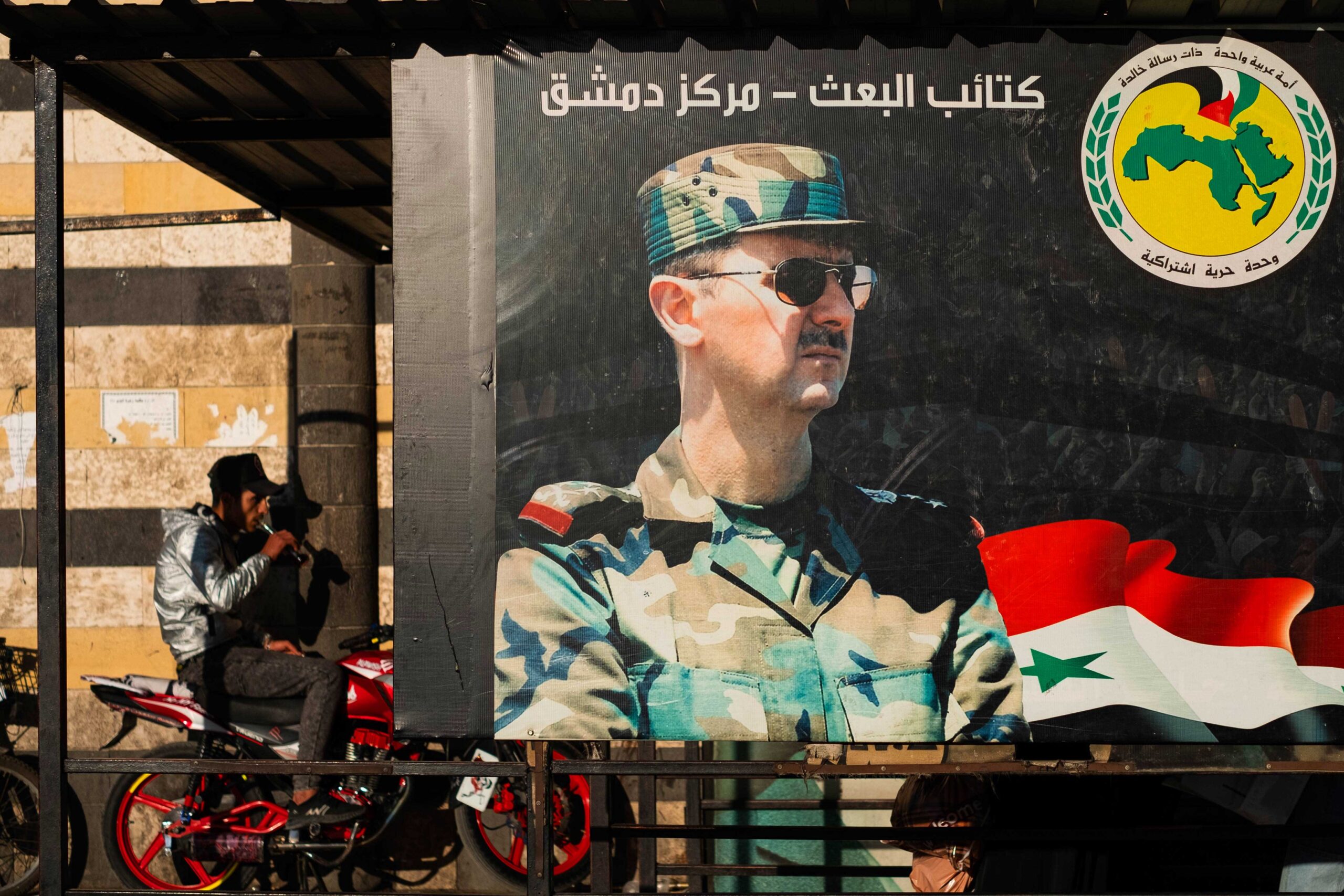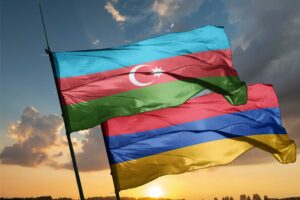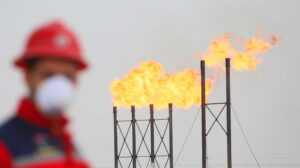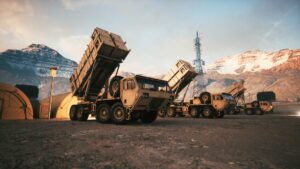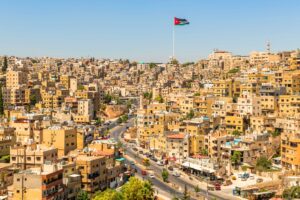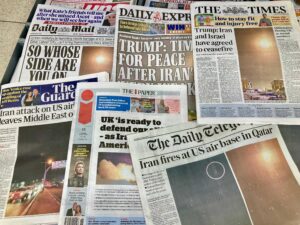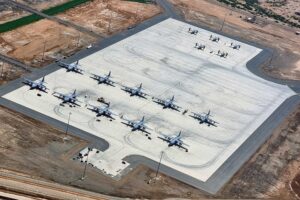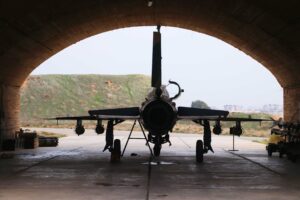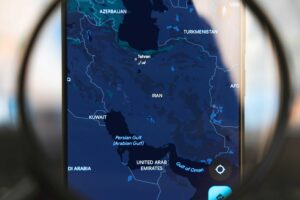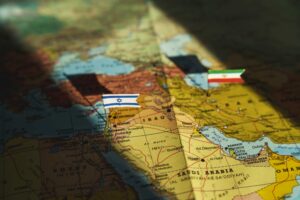Bashar al-Assad is the infamous strongman of Syria who is enshrined in one of the most brutal civil wars in modern history. Taking leadership of the Syrian Baathists after his father’s and brother’s deaths[i], Assad carried on his family’s rule over the country for nearly six decades.
The Syrian Civil War, initially starting from civilian protests, quickly turned bloody and out of control as Assad’s government loyalists nearly collapsed on multiple fronts. However, Russian intervention kept the strongman afloat, albeit with a devastated country with no apparent path of recovery. Thinking his seat of power was firmly safe, Assad is quickly finding himself in a precarious position as a string of unforeseen circumstances, multiple wars, and a lack of funds and security is quickly turning Syria into the cataclysmic state waiting to explode that the Syrian strongman feared at the height of the civil war.
The Syrian Civil War and Foreign Intervention
During the first few years of the Syrian Civil War, Assad’s government forces faced mass desertion[ii], numerous reconstitutions of understaffed units[iii], and major setbacks as rebel and jihadist factions took over large swaths of Aleppo, Idlib, Raqqah, and Deir Ezzor.[iv] In 2015, rebel factions started pushing into Latakia, an Alawite coastal heartland that is a major base of Assad’s Baathist party. The now slain Iranian Quds Force General Qasem Soleimani allegedly visited Vladimir Putin in Moscow[v] to court for a direct Russian intervention, as even with IRGC troops and affiliates, government forces were on their heels on several fronts.
Russia’s intervention turned the tide for Assad’s forces as Moscow’s notorious scorched earth tactics[vi] and special forces forced the rebels and extremists to withdraw from key areas in Homs, Hama, and Aleppo. Russian private military contractors such as the Wagner Group would take security[vii] to help the overstretched Syrian army along with torturing and executing dissidents and detainees.
The civil war turned into a frozen conflict on favorable terms for Assad in 2019[viii] as his military and aligned forces controls the majority of the population centers in Syria[ix] with the United States and Turkey having their own zones of influence in the north of the country, and with rebel groups now dominated by extremists. Against the backdrop of the 2019 freeze in conflict favorable to government loyalists, Assad slowly made his way back into the international limelight[x] as Arab states began the normalization process again with Syria.[xi] Reeling from sanctions that have crippled the economy, Assad turned his country into one of the world’s foremost narcotics epicenters with the deadly captagon drug[xii] that has drawn anger from Arab states that initially welcomed the regime back with open arms.
Assad’s Main Backers are Preoccupied
In 2023, the United States Congress once again discussed a potential withdrawal of the remaining American special forces from Syria[xiii]—much to the delight of Assad and the Turkish government, who both want to crush the Kurdish-led breakaway region of the autonomous Rojava.[xiv] However, Assad’s position has become increasingly precarious.
The Kremlin has been forced to withdraw or leave skeleton crew units in various theaters—Syria being one of them.
Russia’s ill-planned and ill-prepared invasion of Ukraine is seeing Moscow take casualties not seen in the country since WWII.[xv] Due to the staggering losses and ambitions of 19th century glory by Vladimir Putin, the Kremlin has been forced to withdraw or leave skeleton crew units in various theaters—Syria being one of them. Russia withdrawing units from Syria is having effects on Assad’s hold over the country.[xvi] Combat veterans of Russia’s paratroopers and Spetsnaz from Syria have been killed over the past two years, and Israel has taken advantage[xvii] of the lack of Russian air defense systems[xviii], also transferred to Ukraine to strike even more at will towards Assad’s forces and Iranian allies.
Simultaneously, Russia’s Black Sea Fleet[xix], which provided naval support to Syria throughout the war is decimated.[xx] Over one-third of the fleet’s ships have been damaged or destroyed[xxi] and the Kremlin has withdrawn the fleet from Crimea[xxii] to other safer naval facilities such as Novorossiysk and occupied Abkhazia.
Iran, like Russia, is also facing a major security conundrum as high-ranking Revolutionary Guard Corps (IRGC) officers have evacuated Syria in lieu of frequent and brazen Israeli attacks, such as the one near the Iranian embassy in April.[xxiii]
An ISIS Comeback
Against the backdrop of major Russian and Iranian withdrawals from Syria, ISIS, who laid dormant and underground after losing their “caliphate” is returning with a vengeance.[xxiv] Not wanting to draw attention, but simultaneously gaining steam and ramping up recruitment, the extremist group is increasing attacks in a surge not seen since 2018.[xxv]
ISIS does not claim credit for the majority of hit and runs against the Syrian army or Kurdish-led Syrian Democratic Forces (SDF) in order not to draw in a renewed international coalition.[xxvi] Simultaneously, with major attacks, extremist organizations do take credit such as the attempted mass breakout from SDF prisons[xxvii] and mass casualty strikes against the more undisciplined Syrian army.
Building a new base of operations around the Homs desert[xxviii], ISIS foot soldiers are able to conduct hit and run attacks at will against Syrian army garrisons thanks to the punishing topography.[xxix] In the Homs desert, there are rigid and sometimes impassable mountains that give room for proper defenses from Russian and Syrian airstrikes and sandstorms, allowing ISIS to move freely without interruption.
The lack of US military operations in Syria is also a major factor in resurging ISIS activities in the country.
Assad being one of the loudest voices for an American withdrawal is ironically facing a challenge, as the lack of US military operations in Syria is also a major factor in resurging ISIS activities in the country.[xxx] The SDF, which faces pressure from the Turkish military and Iranian-led militias, cannot conduct major operations without full American support, and the Syrian army, now diminished, likewise cannot conduct offensives against extremists without Russia or Iran.
Unable to Stop Israeli Incursions
Israel has taken advantage of the removal of Russian air defense systems. Since 2023, Israeli airstrikes have increased in their frequency in Syria[xxxi]—a direct correlation with significant reduction of Russian forces.
2024 is witnessing more brazen Israeli strikes due to the current war with Hamas[xxxii] and the ongoing shadow war with Iran and its affiliates.[xxxiii] In order to supplement its proxies such as Hezbollah and Hamas, the IRGC continues to use the land corridor from Iran through Iraq and Syria to Lebanon for its continuous stream of weapons transfers.[xxxiv]
Wanting to interdict Iran’s land corridor, Israel is stepping up airstrikes[xxxv], using warplanes such as F-16s and the more advanced F-35 fleet to eliminate key bases in Syria. The S-300 system, now stretched out due to losses in Ukraine, has not been able to keep up with the Israeli Air Force over Syria, putting Assad in a precarious position.
Though Hezbollah, the Houthis, and Iranian-affiliated militias are able to supplement Hamas with their own tactics, the Syrian army is not, due to the deteriorating security situation, their short-staffing issues and a lack of preparedness to confront the Israeli army. Because of this, Assad has mostly stayed in the shadows against the backdrop of the Israel-Hamas war in contrast to other partners and affiliates of Iran.
Assad Never Won the Syrian War, Russia and Iran Did
Facing manpower shortages, external and internal threats, and an economy still reeling with little path towards progress, Bashar al-Assad is now fully reliant on Russia and Iran in order to keep his power[xxxvi]—effectively making the longtime Syrian autocrat the most powerful person in his own country no longer.
Moscow and Tehran achieved several major advantages over Damascus and most of the international community.
It is increasingly becoming apparent that Russia and Iran were the true winners of the Syrian Civil War thus far[xxxvii], and not Assad. During the war, Moscow and Tehran achieved several major advantages over Damascus and most of the international community. Russia was able to push its myth of ‘fear’ and ‘invincibility’ in Syria. Moscow’s ‘scorched earth’ policy[xxxviii] allowed the Russian military and Syrian army to achieve their objectives, albeit at the expense of a further deteriorating humanitarian situation. Pushing ‘red lines,’ Russia saw they could get away with leveling cities and protecting Assad’s chemical weapons attacks[xxxix], along with giving proficient units combat experience. Russia would eventually benefit from its tactics in Syria in further preparing for its all-out war in Ukraine.
Iran not only has a major military presence in Syria but can now export the Mullahs’ extreme ideology. Tehran is building Islamic schools in Syria to teach the Khomeini doctrine.[xl]
Syria, a Sunni-majority country carved out from the Sykes-Picot Agreement[xli] and the Treaty of Lausanne[xlii], is now seeing a major influx of pro-Iranian Shiites from Iraq, Afghanistan, and Pakistan, as part of a de-facto population transfer.[xliii] Iran itself is now benefitting from the mass exodus of refugees, the majority of which are Sunni, while Syria’s ‘secular’ aura is diminishing.
Now relegated to being at the mercy of Iranian and Russian protection, Bashar al-Assad’s power is slowly being threatened as Moscow and Tehran are intertwined with dilemmas that have stretched their militaries thin. Isolated from much of the world, the man who tanked his reputation to be the perpetual ruler of Syria will have increasingly less to tangibly rule over.
[i] Brookings (2020). “Pity the nation: Assessing a half-century of Assadist rule”, 14 December 2020, retrieved from: https://www.brookings.edu/articles/pity-the-nation-assessing-a-half-century-of-assadist-rule/.
[ii] Berelovich, E. (2021). “The Syrian Civil War—Evolution of the Syrian Army’s Way of War”, 4 February 2021, retrieved from: https://www.militarystrategymagazine.com/exclusives/the-syrian-civil-war-evolution-of-the-syrian-armys-way-of-war/.
[iii] Waters, G. (2019). “The Lion and the Eagle: The Syrian Arab Army’s Deconstruction and Rebirth”, Middle East Institute, 18 July 2019, retrieved from: https://www.mei.edu/publications/lion-and-eagle-syrian-arab-armys-destruction-and-rebirth.
[iv] Balanche, F. (2016). “Status of the Syrian Rebellion: Numbers, Ideologies, and Prospects”, WINEP, 22 November 2016, retrieved from: https://www.washingtoninstitute.org/policy-analysis/status-syrian-rebellion-numbers-ideologies-and-prospects.
[v] INSS (2020). “Qassem Soleimani: Moscow’s Syria Decision”, 4 February 2020, retrieved from: https://inss.ndu.edu/Media/News/Article/2074132/.
[vi] Hamilton, R., Miller, C. and Stein, A. (2020). “Russia’s Intervention in Syria: Historical and Geopolitical Context”, Foreign Policy Research Institute, retrieved from: https://www.fpri.org/wp-content/uploads/2020/09/report-1-hamilton-stein-miller.pdf.
[vii] Giustozzi, Dr A. (2024). “How the Wagner Group Lost Syria”, RUSI, 31 May 2024, retrieved from: https://rusi.org/explore-our-research/publications/commentary/how-wagner-group-lost-syria.
[viii] IISS (2023). “Syria’s frozen conflict and a wave of earthquake-related diplomacy”, April 2023, retrieved from: https://www.iiss.org/en/publications/strategic-comments/2023/syrias-frozen-conflict-and-a-wave-of-earthquake-related-diplomacy/.
[ix] Yacoubian, M. (2023). “Syria’s Stalemate Has Only Benefitted Assad and His Backers”, USIP, 14 March 2023, retrieved from: https://www.usip.org/publications/2023/03/syrias-stalemate-has-only-benefitted-assad-and-his-backers.
[x] Walsh, D. (2023). “Syria’s Assad Uses Disaster Diplomacy to Inch Back Onto World Stage”, The New York Times, 16 February 2023, retrieved from: https://www.nytimes.com/2023/02/16/world/middleeast/syria-earthquake-assad-diplomacy.html.
[xi] Heydemann, S. (2024). “Syria normalization: The failure of defensive diplomacy”, Brookings, 2 August 2024, retrieved from: https://www.brookings.edu/articles/syria-normalization-the-failure-of-defensive-diplomacy/.
[xii] Chiappa, C. (2023). “Drug that makes Syrian regime millions trafficked through Europe, report says”, Politico, 13 September 2023, retrieved from: https://www.politico.eu/article/europe-key-transit-hub-for-captagon-trafficking-new-report-finds/.
[xiii] Caggins III, M.B. and Moorman, C. (2023). “Preparing for Withdrawal From Syria: Building an Immigration Program for U.S. Partners of Operation Inherent Resolve”, New Lines Institute, 27 October 2023, retrieved from: https://newlinesinstitute.org/state-resilience-fragility/preparing-for-withdrawal-from-syria-building-an-immigration-program-for-u-s-partners-of-operation-inherent-resolve/.
[xiv] Siccardi, F. (2024). “Why Turkey’s Syria Policy May Be About to Change”, Diwan, 5 February 2024, retrieved from: https://carnegieendowment.org/middle-east/diwan/2024/02/why-turkeys-syria-policy-may-be-about-to-change?lang=en.
[xv] The Economist (2024). “How many Russian soldiers have been killed in Ukraine?”, 5 July 2024, retrieved from: https://www.economist.com/graphic-detail/2024/07/05/how-many-russian-soldiers-have-been-killed-in-ukraine.
[xvi] Yacoubian, M. (2023). “Ukraine’s Consequences Are Finally Spreading to Syria”, War on the Rocks, 10 January 2023, retrieved from: https://warontherocks.com/2023/01/ukraines-consequences-are-finally-spreading-to-syria/.
[xvii] Kingsley, P. and Bergman, R. (2022). “Russia Shrinks Forces in Syria, a Factor in Israeli Strategy There”, The New York Times, 19 October 2022, retrieved from: https://www.nytimes.com/2022/10/19/world/middleeast/russia-syria-israel-ukraine.html.
[xviii] Sutton, H.I. (2022). “Russian S-300 Missile System Slips Through Bosporus Towards War in Ukraine”, Naval News, 27 August 2022, retrieved from: https://www.navalnews.com/naval-news/2022/08/russian-s-300-missile-system-slips-through-bosporus-towards-war-in-ukraine/.
[xix] Belfer Center (1995). “Crimea and the Black Sea Fleet in Russian-Ukrainian Relations”, 1 September 1995, retrieved from: https://www.belfercenter.org/publication/crimea-and-black-sea-fleet-russian-ukrainian-relations.
[xx] CIMSEC (2021). “Russian Black Sea Fleet Activity in the Eastern Mediterranean Sea: Implications for the Israeli Navy”, 10 March 2021, retrieved from: https://cimsec.org/russian-black-sea-fleet-activity-in-the-eastern-mediterranean-sea-implications-for-the-israeli-navy/.
[xxi] Thorne, S.J. (2024). “Russia’s Black Sea fleet falls back amid staggering losses”, Legion, 15 May 2024, retrieved from: https://legionmagazine.com/russias-black-sea-fleet-falls-back-amid-staggering-losses/.
[xxii] McBride, J. (2024). “The Withdrawal of the Black Sea Fleet from Crimea is a Major Blow to Vladimir Putin’s ‘Strongman Aura’”, Byline Times, 25 July 1994, retrieved from: https://bylinetimes.com/2024/07/25/ukraine-war-black-sea-fleet-crimea/.
[xxiii] The Jerusalem Post (2024). “Iran evacuates Hezbollah, IRGC commanders from Syria amid fears of Israeli retaliation”, 18 April 2024, retrieved from: https://www.jpost.com/middle-east/iran-news/iran-evacuates-hezbollah-irgc-commanders-from-syria-amid-fears-of-israeli-retaliation-797693.
[xxiv] Hodge, J. (2024). “The Islamic State Keeps Finding Opportunities”, War on the Rocks, 30 July 2024, retrieved from: https://warontherocks.com/2024/07/the-islamic-state-keeps-finding-opportunities/.
[xxv] U.S. Central Command (2024). “Defeat ISIS Mission in Iraq and Syria for January-June 2024”, 16 July 2024, retrieved from: https://www.centcom.mil/MEDIA/PRESS-RELEASES/Press-Release-View/Article/3840981/defeat-isis-mission-in-iraq-and-syria-for-january-june-2024/#:~:text=TAMPA%2C%20Fla.,several%20years%20of%20decreased%20capability.
[xxvi] Bunzel, C. (2021). “Explainer: The Islamic State in 2021”, 10 December 2021, retrieved from: https://www.wilsoncenter.org/article/explainer-islamic-state-2021.
[xxvii] Clifford, B. and Weiss, C. (2020). “’Breaking the Walls’ Goes Global: The Evolving Threat of Jihadi Prison Assaults and Riots”, February 20202, 13(2), retrieved from: https://ctc.westpoint.edu/breaking-walls-goes-global-evolving-threat-jihadi-prison-assaults-riots/.
[xxviii] International Crisis Group (2022). “Containing a Resilient ISIS in Central and North-eastern Syria”, 18 July 2022, retrieved from: https://www.crisisgroup.org/middle-east-north-africa/east-mediterranean-mena/syria/containing-resilient-isis-central-and-north.
[xxix] Topographicmap.com (2024). “Homs topographic map”, retrieved from: https://en-gb.topographic-map.com/map-3zbtf/Homs/?center=34.79689%2C38.01956.
[xxx] Hodge, J. (2024). “The Islamic State Keeps Finding Opportunities”.
[xxxi] Kajjo, S. (2023). “What Is Behind Israel’s Increased Strikes in Syria?”, 5 April 2023, retrieved from: https://www.voanews.com/a/what-is-behind-israel-s-increased-strikes-in-syria/7037852.html.
[xxxii] Petrila, J. (2024). “Conflict in Gaza: The Law of War and Irregular Warfare in Urban Terrain”, FPRI, 5 March 2024, retrieved from: https://www.fpri.org/article/2024/03/conflict-in-gaza-the-law-of-war-and-irregular-warfare-in-urban-terrain/.
[xxxiii] McBride, J. (2024). “Israel and Iran: A High-Stakes Shadow War Intensifies”, 1945, 23 April 2024, retrieved from: https://www.19fortyfive.com/2024/04/israel-and-iran-a-high-stakes-shadow-war-intensifies/.
[xxxiv] Ghaddar, H. (2016). “Iran May Be Using Iraq and Syria as a Bridge to Lebanon”, WINEP, 23 November 2016, retrieved from: https://www.washingtoninstitute.org/policy-analysis/iran-may-be-using-iraq-and-syria-bridge-lebanon.
[xxxv] Jusoor (2024). “Israeli Strikes in Syria in 2023, 10 January 2024, retrieved from: https://jusoor.co/en/details/israeli-strikes-in-syria-in-2023.
[xxxvi] Aalahi, A. (2020). “Is Assad now a liability? The mysterious Russian media campaign against Syria’s dictator”, 1 May 2020, retrieved from: https://www.newarab.com/analysis/syrias-assad-now-liability-russia.
[xxxvii] Borshchevskaya, A. (2022). “Russia’s Strategic Success in Syria and the Future of Moscow’s Middle East Policy”, WINEP, 23 January 2022, retrieved from: https://www.washingtoninstitute.org/policy-analysis/russias-strategic-success-syria-and-future-moscows-middle-east-policy.
[xxxviii] RANE (2022). “Russia’s Scorched-Earth Tactics in Syria Won’t Prove as Successful in Ukraine”, 7 November 2022, retrieved from: https://worldview.stratfor.com/article/russias-scorched-earth-tactics-syria-wont-prove-successful-ukraine.
[xxxix] Kimball, D. and Davenport, K. (2023). “Timeline of Syrian Chemical Weapons Activity, 2012-2022”, Arms Control Association, October 2023, retrieved from: https://www.armscontrol.org/factsheets/timeline-syrian-chemical-weapons-activity-2012-2022.
[xl] Motevali, J. (2020). “Iran Builds Schools in Syria while Iranian Children Suffer”, Iran Wire, 28 January 2020, retrieved from: https://iranwire.com/en/features/66660/.
[xli] Wright, R. (2016). “How the Curse of Sykes-Picot Still Haunts the Middle East”, The New Yorker, 30 April 2016”, retrieved from: https://www.newyorker.com/news/news-desk/how-the-curse-of-sykes-picot-still-haunts-the-middle-east.
[xlii] McBride, J. (2023). “The Treaty of Lausanne: Negotiated in the Ashes of World War I”, 14 July 2023, retrieved from: https://sofrep.com/news/the-treaty-of-lausanne-negotiated-in-the-ashes-of-world-war-i/.
[xliii] McBride, J. (2024). “The Quiet Iranian Population Transfer to Syria: Exporting the Revolution:, 2 August 2024, retrieved from: The Quiet Iranian Population Transfer to Syria: Exporting the Revolution | SOFREP.


